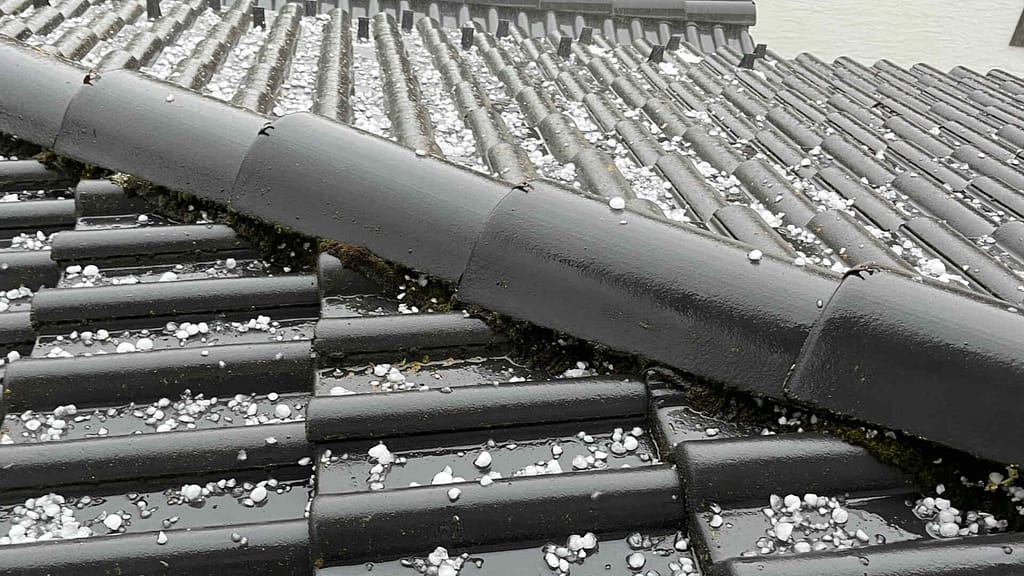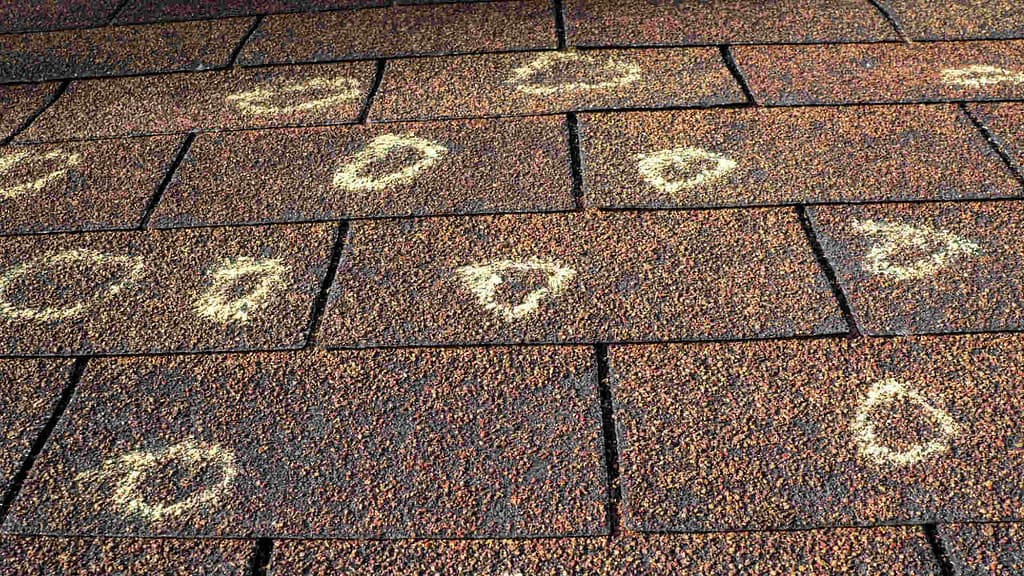How much hail damage is needed to replace a roof? This blog explores when hail damage is severe enough to consider a roof replacement, including understanding hail size, assessing roof damage, and managing insurance claims.
Table of contents
Understanding Hail Damage
Understanding hail damage is key to knowing when your roof might need replacement. This section covers what hail is, how it forms, and its impact on roofs. We'll look at how hail varies in size and explore the different types of damage it can cause, from small dents to major cracks. This information will help you assess the condition of your roof after a hailstorm.
Characteristics of Hail
Hail is a type of precipitation, much like rain, but it falls as ice pellets. These pellets can vary greatly in size—from as small as peas to as big as grapefruits. The size and density of hailstones depend on the conditions in the atmosphere where they form. For hail to develop, there must be strong updrafts in thunderstorms that carry droplets of water high enough to freeze. As these ice pellets fall through the storm, they can collect more water, which freezes and adds additional layers to the hailstone, increasing its size.
How Hail Damages Roofs

When hail hits a roof, it can cause a variety of damage types, which largely depend on the size of the hail and the type of roofing material. Common types of damage include:
- Dents and Bruises: On metal roofs, large hailstones often leave visible dents. On asphalt shingles, hail can knock off the granules that protect the shingle from sunlight and weather, leaving dark spots or bruises.
- Cracks and Holes: Severe hail impacts can crack or break tiles made of slate or clay. In extreme cases, hail can even punch holes through weaker materials.
- Compromised Integrity: Even if the damage isn't immediately visible, repeated hail impacts can weaken a roof's overall integrity, making it more susceptible to future damage.
Wondering what hail damage on a roof looks like? Visit our blog post, "What Does Hail Damage Look Like On A Roof?" for a detailed look.
When to Consider Roof Replacement
Determining when hail damage is severe enough to consider replacing your roof involves assessing the extent and nature of the damage.
Extent of Damage
Hail needs to be approximately 1 inch in diameter or larger to significantly damage most roofing materials, which might warrant an insurance claim. Here’s how to evaluate the damage:
- Surface Damage: This includes cosmetic issues like small dents on metal roofs or missing granules from asphalt shingles, often caused by smaller hail. While these might not immediately compromise your roof, they can reduce its lifespan and effectiveness against future weather.
- Structural Damage: More severe and concerning, structural damage occurs with larger hail and can significantly impact your roof's integrity. This includes large holes, deep cracks across shingles or tiles, and areas where the roof feels unstable or spongy when walked on. Structural damage usually requires roof replacement to ensure your home remains safe and adequately protected. To estimate the potential costs of replacing your roof, consider using our Roof Replacement Cost Calculator.
When assessing how much hail damage is needed to replace a roof, it’s important to remember that hail of 1 inch in diameter or larger is likely to cause the kind of harm that justifies filing an insurance claim and potentially replacing the roof.
Age and Condition of Roof
The age and overall condition of your roof are crucial factors in deciding whether to repair or replace it after hail damage. Older roofs nearing the end of their expected lifespan might not benefit much from repairs, especially if they already show signs of wear like leaks or missing pieces. In such cases, replacing the roof could be more cost-effective, preventing the cycle of frequent repairs.
For newer roofs that were in good shape before the storm, it might be more reasonable to repair the damage, especially if it's minor. However, if significant structural damage has occurred due to large hail, replacement might still be the best option, even for relatively new roofs, to ensure long-term protection and stability.
Evaluating these factors can help you make a more informed decision about roof replacement after hail damage. Consulting with a roofing expert can provide additional insights and help you navigate the process, including handling insurance claims. Instant Roofer can quickly connect you with a qualified roofer through our constantly updated database. With validated reviews, contact information, and pricing, you can easily find the best match for your project. Visit our Find a Roofer page to get started.
Navigating Insurance Claims for Hail Damage
Before you can file an insurance claim for hail damage, it's important to understand the specifics of your insurance policy. Many policies cover hail damage, but the extent of coverage can vary. Here are a few key insurance terms you might come across:
- Deductible: This is the amount you pay out of pocket before your insurance coverage kicks in. If your deductible is $1,000, you'll need to cover the first $1,000 of the repair costs yourself.
- Coverage Limit: This refers to the maximum amount your insurance will pay for a covered loss. It’s crucial to know this limit to ensure it aligns with the current costs of roofing repairs or replacement.
- Exclusions: These are damages or conditions that your policy does not cover. Some policies may have specific exclusions for certain types of roof materials or older roofs.
- Actual Cash Value vs. Replacement Cost: Actual cash value coverage pays for the roof’s value at the time of the damage, considering depreciation. Replacement cost coverage pays to replace the roof without deducting for depreciation.
Check out this YouTube video on what you should know before filing a hail damage claim.
What to Expect from the Insurance Adjuster

When you file a claim for hail damage, your insurance company will send an adjuster to check your roof. The adjuster will look at the roof to see how much damage there is and take measurements, photos, and notes. You should also have your own photos and records of the hail storm and the damage it caused to help support your claim. After the inspection, the adjuster will tell you how much it will cost to fix or replace your roof and decide how much of that cost your insurance will cover based on your policy.
It's important to be ready for the adjuster's visit and understand what will happen. Make sure to ask any questions you have about the process or your coverage during their visit so you know what steps you need to take next.
Conclusion
In this blog, we've covered the essentials of how much hail damage is needed to replace a roof. Knowing how to check for hail damage and understanding your insurance policy can help you make smart decisions if your roof is hit by a storm. Keeping up with regular roof maintenance and being proactive with repairs are key to preventing severe damage in the future.
Remember, if your roof does get damaged by hail, knowing the size of the hail and how it has affected your roof's structure will guide you in deciding whether to repair or replace it. Be ready to discuss your options with insurance adjusters and know your policy details to ensure you get the most from your claim. Armed with this knowledge, you can keep your roof in top shape and your home safe from the elements.
Fact checked by Adrian Catolico - 5/28/2024

